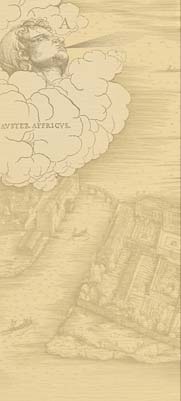Ships and Shipbuilding
Michael's manuscript contains the world's first known treatise on shipbuilding. Michael copied it from existing documents, so it's certainly not the first treatise ever written. It is, however, the earliest text of its kind to survive.
The treatise is the second longest section of Michael's manuscript and covers two kinds of ships: first three galleys, and then two sailing ships. His descriptions reveal fundamental features of ship design as it was practiced during the Middle Ages and contain a huge amount of information about sails and rigging.
Though not a shipbuilder himself, Michael needed to know a great deal about the dimensions of ships in order to stow, rig, and outfit them properly. It's quite likely that he was interested in the subject because of the design disputes of his own day, and he may have been interested in them for mathematical reasons as well.
Find out more:
The best introduction to the ships of the period is still Frederic C. Lane, Venetian Ships and Shipbuilders of the Renaissance (Baltimore, 1934). For the Venetian arsenal, see Ennio Concina, L'arsenale della Repubblica di Venezia: Tecniche e istituzioni dal medioevo all'età moderna (Milan, 1984); Mauro Bondioli,"The Arsenal of Venice and the Art of Building Ships," in Boats, Ships and Shipyards. Atti del IX International Symposium on Boat and Ship Archaeology, ed. Carlo Beltrame (Oxford, 2000), 222-227; Robert C. Davis, Shipbuilders of the Venetian Arsenal: Workers and Workplace in the Preindustrial City (Baltimore 1991); and David McGee, "From Craftsmanship to Draftsmanship: Naval architecture and the Three Traditions of Early Modern Design," Technology and Culture 40 (April 1999): 209-236. For the techniques of construction behind Michael's descriptions see Eric Rieth, Le maître-gabarit, la tablette et le trebuchet; Éssai sur la conception non graphique des carènes du Moyen-Âge au XXe siècle (Paris, 1996).











